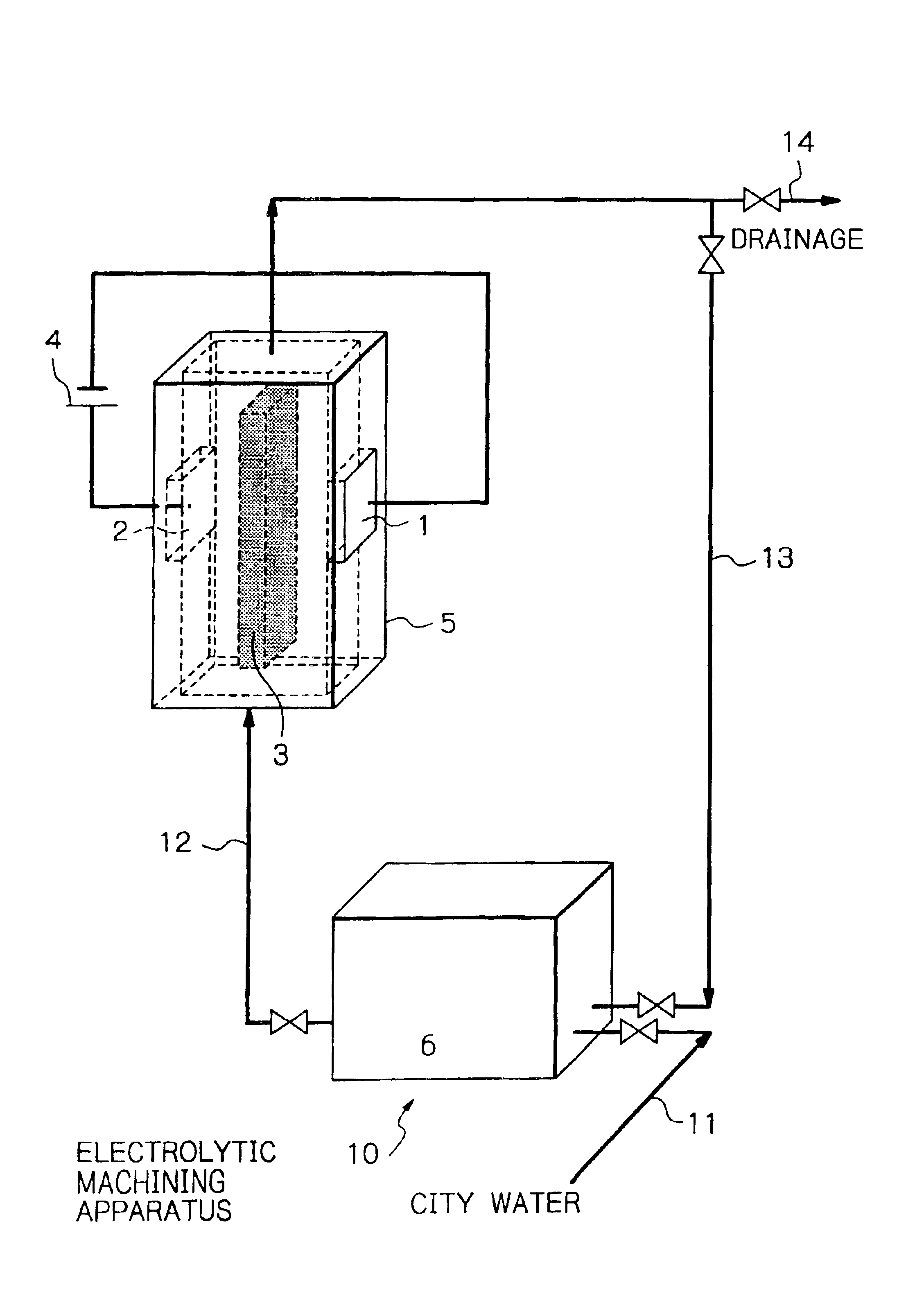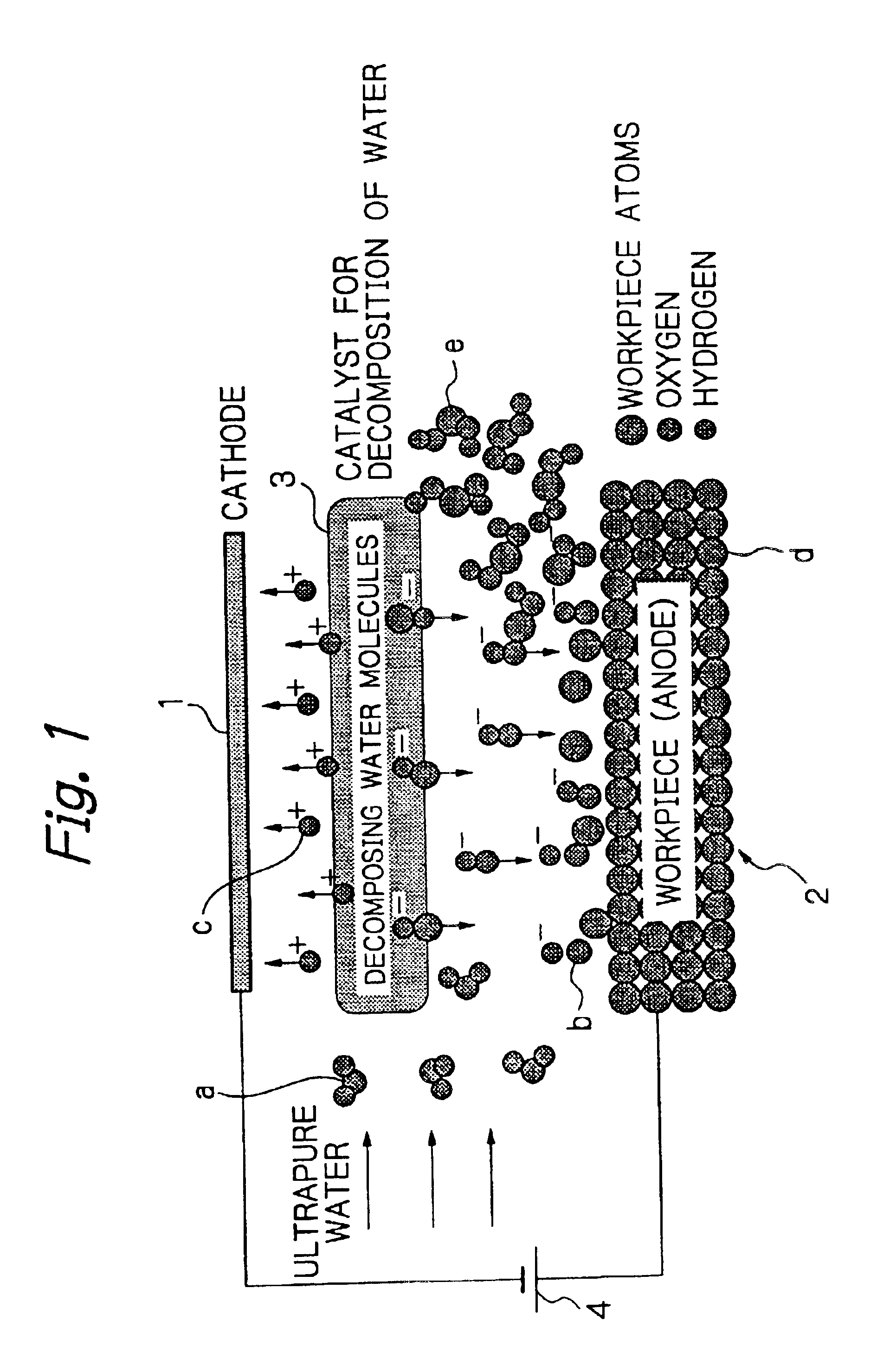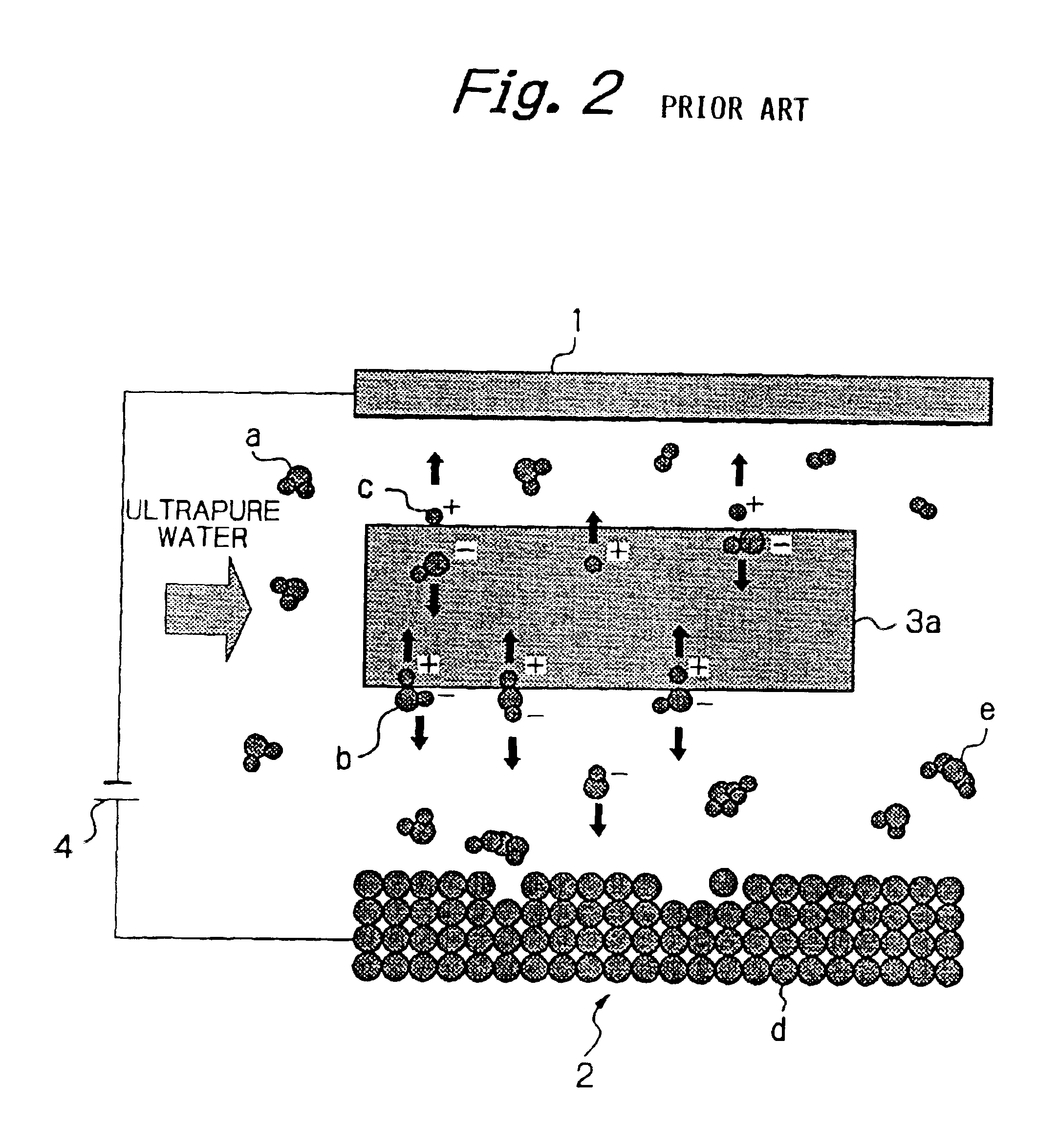Electrolytic machining method and apparatus
- Summary
- Abstract
- Description
- Claims
- Application Information
AI Technical Summary
Benefits of technology
Problems solved by technology
Method used
Image
Examples
example 1
The apparatus shown in FIG. 5 was used for experiments. Ultrapure water was supplied at a flow rate of 300 ml / min, and the nonwoven fabric 3 provided with strongly acidic cation exchange ability was disposed between both electrodes 1 and 2. The electrodes 1 and 2 were both made of platinum. Using these members, the relation between a voltage applied and a current density was investigated. The distance between the electrodes was 0.8 mm, and the nonwoven fabric 3 provided with strongly acidic cation exchange ability was disposed in contact with both electrodes. The nonwoven fabric 3 provided with strongly acidic cation exchange ability was prepared by radiation-induced graft polymerization of a nonwoven polyolefin fabric having a fiber diameter of 20 to 50 μm and a void ratio of about 90%, namely, a polymerization method which irradiated the nonwoven fabric with γ rays and then graft polymerized the irradiated fabric. Further, the incorporated graft chains were sulfonated to introduce...
example 2
An attempt at electrolytic removal processing was made by means of the same apparatus as in Example 1 and using platinum as the cathode 1 and Mo or Fe as the workpiece 2 (anode), with the nonwoven fabric 3 given strongly acidic cation exchange ability being fixed between the electrodes. The results are shown in FIG. 7.
The processing speed was proportional to the current density for each of Mo and Fe, and a nearly linear relation was seen between these parameters. These findings confirmed that removal processing can be performed by moving hydroxide ions generated by decomposition of water onto the surface of the workpiece 2 and reacting the hydroxide ions with the workpiece 2, and that the processing speed is determined by the amount of hydroxide ions moved to the surface of the workpiece 2, and is governed by the magnitude of the current density.
example 3
As shown in FIG. 8, removal processing of Cu was performed, with the nonwoven fabric given strongly acidic cation exchange ability being in contact with the cathode, but away from the anode (Cu) by a distance of 60 μm. When the removal processing was carried out for 2 minutes at a current density of 0.5 A / cm2, a volume processing speed of 1.0 mm3 / min or a processing speed in the depth direction of 10 μm / min was obtained, as shown in FIG. 7. This processing speed corresponds to a current efficiency of 91%, on the assumption that Cu is being processed as divalent ions.
PUM
| Property | Measurement | Unit |
|---|---|---|
| Temperature | aaaaa | aaaaa |
| Flow rate | aaaaa | aaaaa |
| Volume | aaaaa | aaaaa |
Abstract
Description
Claims
Application Information
 Login to View More
Login to View More - R&D
- Intellectual Property
- Life Sciences
- Materials
- Tech Scout
- Unparalleled Data Quality
- Higher Quality Content
- 60% Fewer Hallucinations
Browse by: Latest US Patents, China's latest patents, Technical Efficacy Thesaurus, Application Domain, Technology Topic, Popular Technical Reports.
© 2025 PatSnap. All rights reserved.Legal|Privacy policy|Modern Slavery Act Transparency Statement|Sitemap|About US| Contact US: help@patsnap.com



